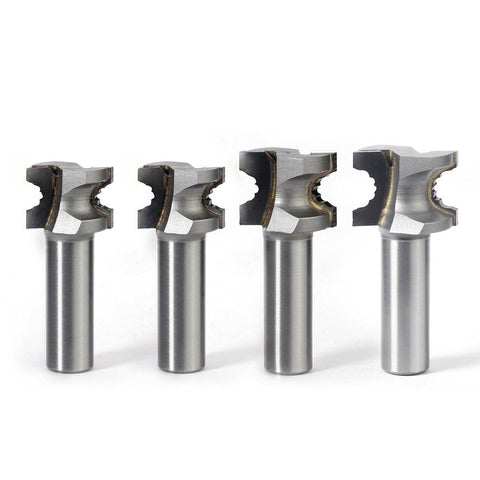
Choosing the Right Joinery Tool: Domino Joiner vs. Biscuit Joiner
Woodworking enthusiasts and professionals alike often face the dilemma of choosing the right joinery tool for their projects: the Domino joiner or the biscuit joiner. Each tool offers unique advantages and applications, catering to different needs and preferences in the workshop.
The Domino joiner, manufactured by Festool, represents a modern approach to joinery. It utilizes a rotating cutting bit to create mortises in wood, into which specially shaped tenons (Dominos) are inserted. This method, akin to a loose tenon joint, provides exceptional strength and alignment precision. The Domino joiner excels in structural applications where robust joints are essential, such as in furniture construction and frame assembly. Its ability to cut mortises quickly and accurately makes it a favorite among craftsmen seeking efficiency without compromising on quality.
On the other hand, the biscuit joiner, also known as a plate joiner, offers a versatile and accessible option for joinery tasks. It features a circular saw blade that cuts slots into adjoining pieces of wood, into which football-shaped biscuits (usually made of compressed wood like beech) are inserted and glued. This method is renowned for its simplicity and ease of use, making it suitable for a wide range of woodworking projects, from cabinet making to edge joining panels. The biscuit joiner's ability to create strong, invisible joints with minimal setup time appeals to woodworkers of all skill levels, from beginners to seasoned professionals.
When comparing the Domino joiner and the biscuit joiner, several factors come into play:
- Strength and Durability: The Domino joiner's loose tenon joints are exceptionally strong, capable of withstanding heavy loads and stress. This makes it ideal for constructing large pieces of furniture, doors, and structural frameworks where joint integrity is crucial. In contrast, while biscuit joinery provides adequate strength for most woodworking applications, it may not match the sheer robustness of Domino joints in heavy-duty tasks.
- Precision and Alignment: The Domino joiner is prized for its precise mortise cuts, ensuring perfect alignment of joints without the need for additional clamping or adjustment. This accuracy is particularly beneficial in projects requiring seamless assembly and meticulous craftsmanship. On the other hand, biscuit joinery, while precise in its own right, may require more attention to ensure proper alignment during assembly, especially in larger or more complex structures.
- Versatility and Ease of Use: Biscuit joiners are celebrated for their versatility, accommodating various joint configurations such as edge-to-edge, end-to-edge, and miter joints. They are relatively straightforward to operate, making them accessible to woodworkers of all levels. In contrast, while the Domino joiner offers versatility in joint sizes and configurations, it may require a steeper learning curve due to the intricacies of mortise and tenon fitting.
- Application Specificity: The choice between a Domino joiner and a biscuit joiner often boils down to the specific requirements of the woodworking project. For intricate furniture pieces or custom cabinetry where joint strength and precision are paramount, the Domino joiner may be the preferred tool. Conversely, for general woodworking tasks that demand efficiency and simplicity without sacrificing quality, the biscuit joiner remains a reliable choice.
Ultimately, the decision between a Domino joiner and a biscuit joiner hinges on individual preferences, project requirements, and budget considerations. Both tools have their strengths and applications, catering to different facets of woodworking craftsmanship. Experienced woodworkers may find value in owning both tools, utilizing each where its unique strengths shine brightest.
In conclusion, whether opting for the precision of Domino joinery or the versatility of biscuit joinery, woodworkers are empowered with tools that enhance creativity and craftsmanship. The ongoing evolution of joinery techniques and tools continues to enrich the woodworking landscape, offering endless possibilities for creating functional, beautiful pieces that stand the test of time.
